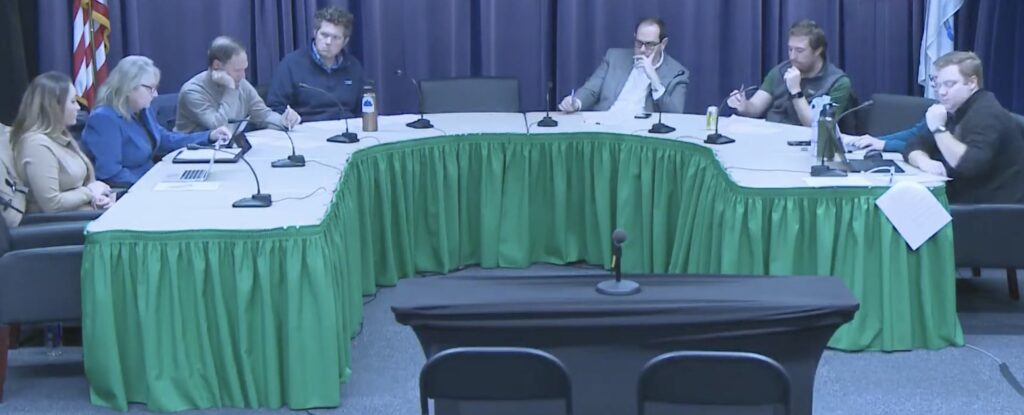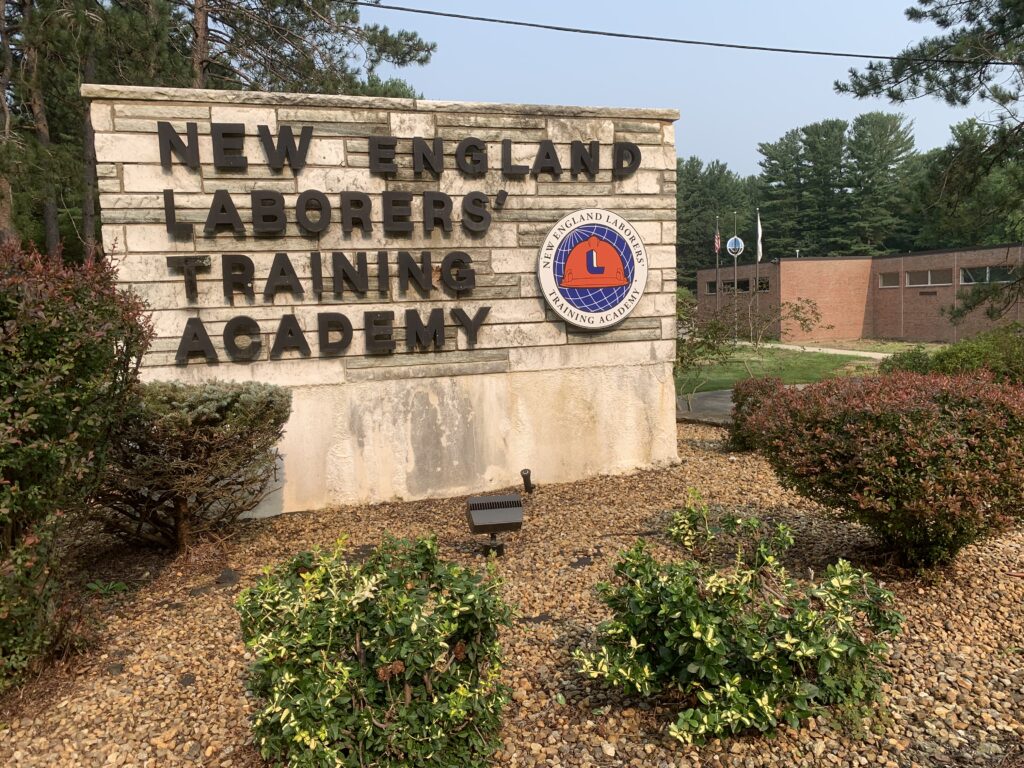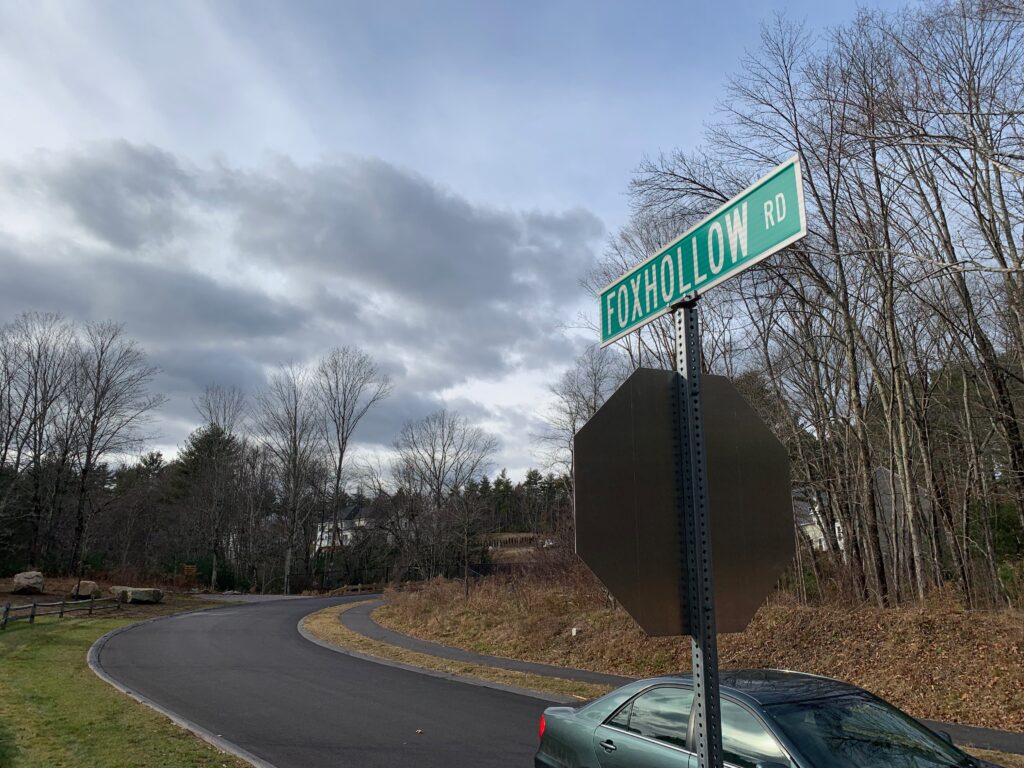The Planning Board met for nearly four hours Monday night, and it ended up continuing several longstanding projects that are on the cusp of approval.
Turkey Ridge Estates development issues cause problem for town open space acquisition
The Turkey Ridge Estates subdivision project, located at 52 Cedar Street Extension, near the Southborough border, has been plagued by weather-related problems that have caused its erosion control barriers to fail on several instances, sending turbid water toward the Sudbury River. Although the developer hired Goddard Consulting after the first incident on Dec. 29 and has made significant efforts toward remediation, additional violations recently prompted the Conservation Commission to leverage $31,800 in fines that had been held in abeyance for the first two violations.
“There have been some open space erosion problems that are of concern for the Planning Board,” said Principal Planner John Gelcich. He described how stormwater has flowed over the open space “and effectively into the river.” There also has been damage to trees and stones piled near some trees.
Gelcich noted that the acquisition of the open space is on the warrant for the upcoming Town Meeting on May 1.
Said Gelcich: “I think it would be hard to justify the Planning Board accepting the open space in the current condition that it’s in right now.”
The applicant submitted a corrective action plan a couple of hours before the meeting, Gelcich said. The work needs to be done before Town Meeting.
Developer Shane Perrault showed pictures taken that show that the disturbed areas “have been cleaned up.” A hydroseed mix was to be planted on Wednesday.
A site walk was scheduled for Saturday morning to assess the land.
The Trails inches closer to approval
The Trails open space mixed use development (OSMUD) got one step closer to the approval finish line. But because an update was sent on the day of the meeting, Trendel said board members didn’t have sufficient time to review it. The board unanimously decided to continue the hearing until the next meeting on April 3.
Engineer Peter Bemis said he was “able to resolve all outstanding issues with our peer review” with Phil Paradis, the town’s consultant from BETA Group. He explained that off-site improvements are being made in Ashland as well as in Hopkinton to address stormwater management. There also now is a long-term operations and stormwater management plan on the property to keep sediment from flowing into the water system in Ashland, which was a previous issue.
Paradis discussed nine changes to the stormwater and landscaping plans as well as to the two basins and the sidewalk, which will have sloped granite curbing. He said the differences largely have been ironed out.
“I would love nothing more than to get this to a vote tonight,” Trendel said of the long-discussed project that has been hampered by continuance requests and late document filings. “But I do want to take a look through the packet.”
Grasshopper project hits snag with proposed planter boxes
Electrical engineer Chris Balogh appeared before the board to present additional proposed modifications to landscaping and fencing plans for Grasshopper Energy’s 2.4-megawatt commercial solar farm between Wilson Street and Cedar Street.
The main point of discussion was how to shield the five electrical boxes from view. Balogh proposed wooden planter boxes as a compromise between a fence and plantings. Trendel said the developers “threw us a curveball” with this suggestion.
Planning Board members said they would be subject to damage from cars and do not fit in with the character of the scenic road. Member Jane Moran continued to suggest tall ornamental grasses, which Balough said would be a good option.
Another issue was that the removal of boulders was not articulated in the plans. This would need to be spelled out for the next review. There also would need to be a five-year plan for the maintenance of plantings.
Members later raised additional points. Member Matthew Wronka said he hoped “to see more of a narrative in the proposal” as to why certain changes were made. His concern was that Grasshopper implemented the board’s recommendations even when members stressed that they are not landscape architects.
Trendel emphasized that space to properly shield the electrical boxes was not considered before construction. The board repeatedly noted concerns about plants surviving at previous meetings.
Said Balogh: “They were installed to where it was in the plan.”
Another point of contention was that members repeatedly have asked for the entrance gate to be moved in front of the site. They were told that the utility company needed to be consulted to see if that was feasible for access.
Trendel expressed frustration that the project has lingered unresolved for more than a year.
Said Trendel: “I think I just want to make clear to the applicant that we really want to wrap this up.”
If not, the board could be “pretty close” to revoking the special permit.
“We want to see your best and final here of something that looks like it fits into the neighborhood and properly shields the boxes and that fits into the street,” Trendel said.
Proposed bylaw amendments set to go before Town Meeting
The Planning Board also endorsed two of the three zoning bylaw amendments proposed by the Zoning Advisory Committee that it previously reviewed. Their topics included electrical vehicle parking and a rooftop solar exemption from site plan requirements.
The proposed inclusionary zoning bylaw generated the most discussion, and it was unanimously continued pending a language revision with edits by town counsel. Trendel pointed out that a change in language that needed to be made is that the number of affordable units needed to be rounded up, not to the nearest whole number. This change was brought up at the previous meeting by member Ron Priefer.
Member Rob Benson said that, from his perspective, he did not see the number of affordable units being rounded up “is something that participants in Town Meeting would be supportive of.”
He pointed out that in the affordable housing developments in town under Chapter 40B, only a fraction of the units “are actually affordable.”
“The percent of affordable housing units in town is way smaller than 10 percent,” he said. Ten percent is the number of affordable housing units that Hopkinton needs to maintain to prevent developers from building affordable housing developments by right and getting around local zoning laws.
Elm Street warehouse building plan generates debate
The most contentious of the night’s hearings was a January proposal for a “flex storage warehouse” at 86 Elm Street. Three waiver requests were presented by Michael Dryden, who spoke on behalf of the proponent, Elm Street Capital. After a protracted debate, it was continued until the next meeting in a unanimous vote.
The first waiver request was to have the loading dock in the front of the building. Dryden noted that it is screened by five other buildings in an industrial park. The second was to waive the requirement for street trees around the parking area because they are not consistent with the rest of the industrial park. Similarly, a request was made for no sidewalk along the frontage because there are no other sidewalks on the site.
While the first and third requests were approved by the board, members’ opinions on the plantings veered. While some wanted plantings for shade, aesthetics and screening for the day care center nearby, others stressed that it is an industrial park.
The major issue that BETA raised about sewerage concerns triggered a debate.
Paradis said that the work is extremely tight at the delineation of the one-acre work. Dryden said it was unfair that a condition would be put in stating that work not encroach beyond this area when there is no intention to do so.
Planning Board member Mary Larson-Marlowe asked if going over one acre would trigger a stormwater management permit requirement. She said there should be a condition to stop any work outside of the one-acre area.
Paradis questioned how going over the boundary would be enforced.
Said Paradis: “This is impossible to police.”
Trendel added that, while this project doesn’t intend to go over its boundaries, other recent projects have, causing problems.
Said Trendel: “That is unfortunately driving our sensitivity here.”
While member Paul Ostrander said he was “sympathetic” to developers, member Fran DeYoung disagreed. DeYoung said that projects that breached boundaries “either by accident or by design” were discussed during this and other recent meetings.
There also was a concern that the setback would cross the highway into an agricultural zoning district. An opinion was to be sought from the zoning enforcement officer to see if it would be enforceable in this case.
Trendel reminded the applicant that “this permit has longevity beyond you and your ownership of the land,” which is why documenting details is important for the Planning Board, even when the applicant agrees with what was discussed by the board.
Dryden also objected to Paradis’ comments about improving soil quality, saying that it cost the developer “significant construction costs.”
“I don’t have a lot of sympathy for them costing you more money,” Trendel said. “Our job as a board is not to make sure that your client makes money. It’s to make sure that what’s built conforms appropriately and is an asset for some time to come for the town.”
Pickleball/tennis court proposal introduced to Planning Board
Parks & Recreation Director Jay Guelfi appeared before the board with project engineer and designer Andrew Leonard to introduce the proposed pickleball/tennis courts for 17 Pratt Way, off Fruit Street.
Two tennis courts are proposed, one of which can be converted into four pickleball courts. There also will be a storage shed and a small shaded seating area. No lights are proposed.
Bioswales are proposed for either side of the court area. The parking lot with 24 spaces will have drainage flowing into one bioswale. A review by BETA was discussed, and Leonard asked that it be done as soon as possible.
“This is a highly anticipated and highly visible project in town,” Guelfi stressed, saying that time is a factor. “People have been wanting this for a long time.”
The board agreed to a site walk on Saturday. The hearing was continued to April 3.
Citizens’ petitions addressed
Two citizens’ petitions were on the agenda for discussion. Trendel stressed that the Planning Board’s role, as with the proposed zoning amendments previously discussed, is to decide whether the board will recommend them for approval at Town Meeting — not to approve or deny them. Regardless of the vote to recommend or not, the discussion will be raised at Town Meeting.
The first one proposed involved changing zoning for 0 and 2 West Elm Street from Residence B to Business. Mary Overholt, a member of the recently closed Community Covenant Church, presented the petition on the two lots owned by the denomination, which encompass about 5 acres. She said that she has posted flyers in the neighborhood to make residents aware of the proposed zoning change.
Several residents commented that they believed that changing the zoning would be financially prohibitive for houses of worship who want to purchase the space because they would be competing against housing and business developers. Trendel stressed that houses of worship are included in all zoning districts in Hopkinton. The Planning Board cannot compel a property to be reserved for houses of worship, which was brought forward by a few commenters.
Noise, traffic and light pollution were raised as concerns.
This citizens’ petition was recommended for approval at Town Meeting. Larson-Marlowe stressed that everyone on the call should attend Town Meeting and let their perspectives be heard there.
The second citizens’ petition was continued at the request of Peter Bemis, the resident who proposed it as himself and not as an engineering consultant. He explained that he is in the process of forming a neighborhood group to discuss and advocate for the petition.
This petition would change the zoning of Hayward Street at South Street from Residence Lake Front to Rural Business. The change would allow for Marguerite Concrete, a concrete company located in Hopedale, to build its new headquarters on these parcels near the former EMC property.



















0 Comments